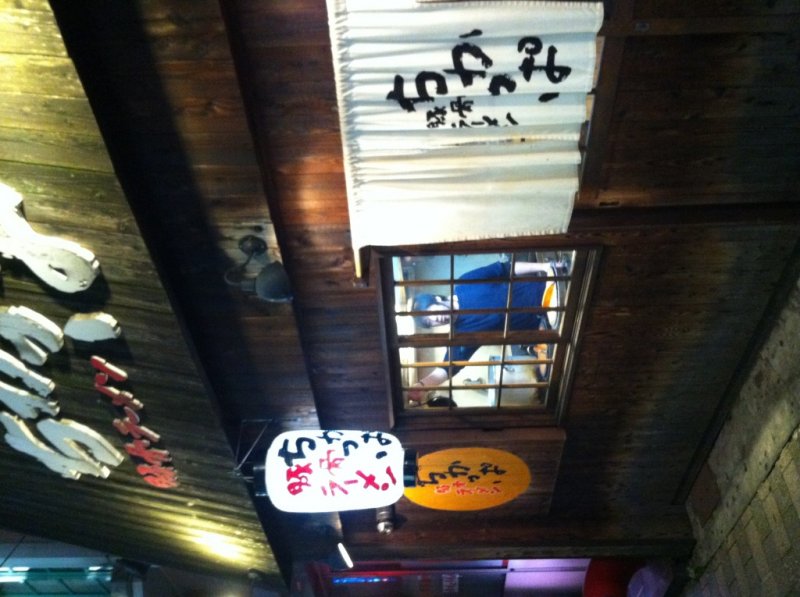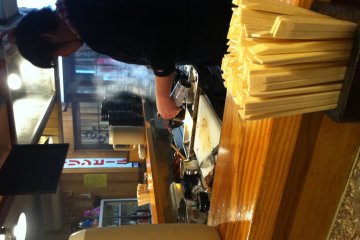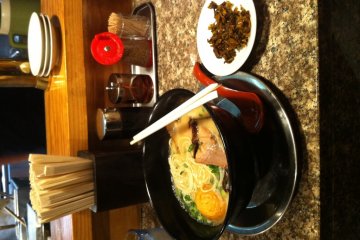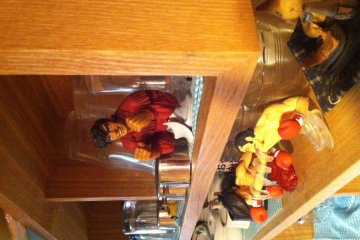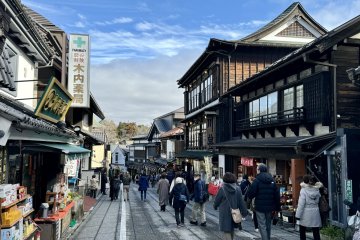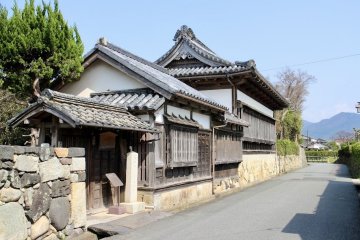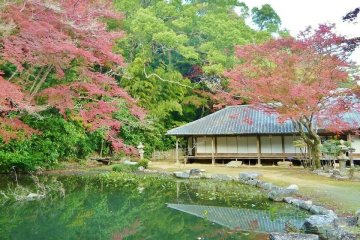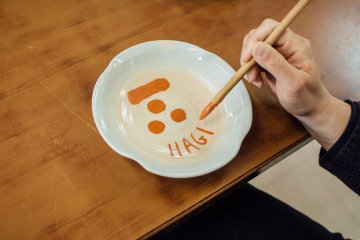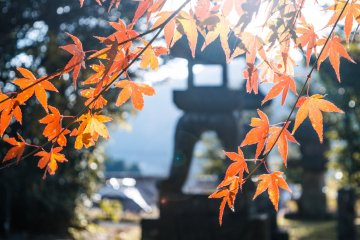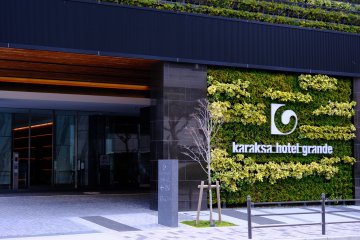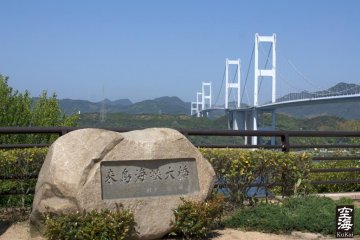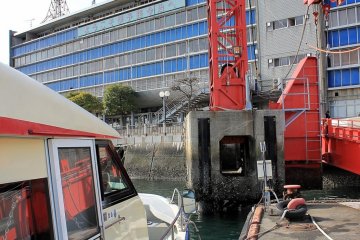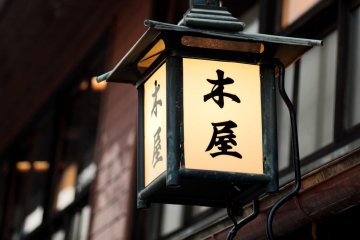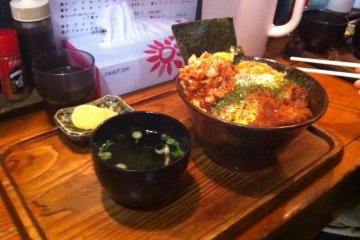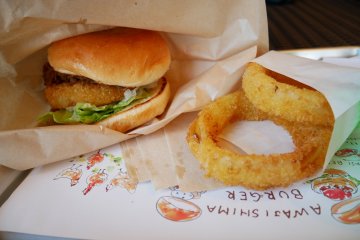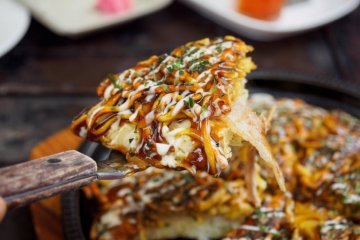On the recommendation of a friend who knows a thing or two about food, I went for ramen at Chikappa on Nibancho Dori in Matsuyama. It was a very cold evening, and snow was drifting down among the bright lights and settling on the bikes and motorcycles parked along the pavement. With its cheerful white lantern and homely stripped-pine exterior, Chikappa was a welcome sight.
Brushing aside the noren curtain, I passed through the sliding doors into the small shop. It was quite smoky inside from something cooking. I’d been told to expect a friendly master who resembled a big bear—and there he was. He greeted me very affably.
Chikappa specializes in tonkotsu ramen, which is noodles in a rich broth, produced by boiling down pork bones. Three main varieties are offered—white, red and black. I chose white, which is the plain variety, with an optional topping of spicy takana salt pickles. Preparation of the ramen seemed to involve a number of elaborate steps, including oiling slices of roast pork and braising them with a blowtorch. There was much blending of oils from different jars on the counter. After considerable time, the steaming bowl of noodles was handed over the counter.
It was very good. The noodles are the thin, round floury variety, offsetting the heavy broth. There was light-brown something in there that turned out to be a deep-fried, soft-boiled egg, a delicacy that I’ve never encountered before. The braised pork was wonderful—soft, sweet and richly aromatic. Crunchy strips of brown seaweed and bean sprouts rounded out the dish. I was handed a pot of takana and invited to help myself. With hindsight, I think the ramen would have been better alone, without the additional topping. A teenager sitting around the counter had ordered the red variety which involved a lot of chili powder—“Karai!” he exclaimed from time to time—“This is hot!”
I asked the master if he has many foreign customers and he told me that Chinese and Korean tourists often visit the shop. He said that they all manage very well by pointing and gestures. The chicken gyoza are very popular apparently.
After a pleasant chat with the master, I paid 700 yen for my meal and went out into the cold night, feeling a good deal warmer with the help of tonkotsu.

